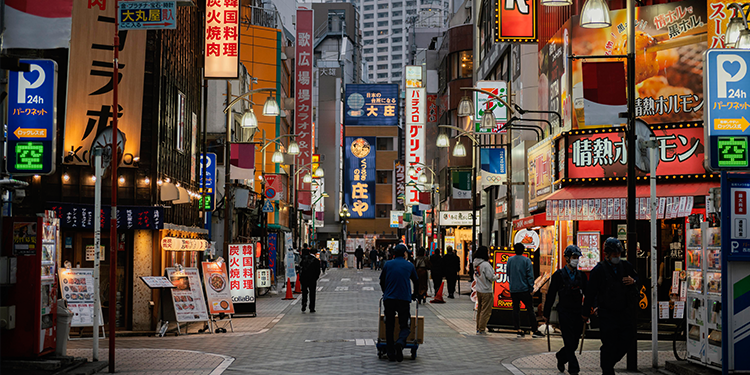Japan Travel Guide for Beginners

April 29, 2025
Japan Travel Guide for Beginners: Complete Tips & Recommendations Japan is one of the most popular tourist destinations in the world, offering a blend of rich traditional culture, modern technology, and stunning natural landscapes. For first-time travelers, this guide will help you prepare everything you need for a smoother and more enjoyable trip.
1. Preparations Before Departure
1.1 Applying for a Japanese Visa
As an Indonesian tourist, you need a visa to enter Japan, unless you have an e-passport, which allows visa-free entry for up to 15 days. If you don’t have an e-passport, apply for a tourist visa through an official agency or directly at the Embassy of Japan.
Commonly required documents:
- A valid passport
- Visa application form
- A 4.5x4.5 cm photo
- Proof of financial means (last 3 months’ bank statements)
- Flight tickets and hotel reservations
- Travel itinerary in Japan
1.2 Choosing the Best Time to Visit
Japan has four distinct seasons, so choose the one that suits your preference:
- Spring (March - May): Cherry blossom season
- Summer (June - August): Summer festivals and fireworks
- Autumn (September - November): Beautiful red and orange autumn leaves
- Winter (December - February): Snow tourism and skiing
1.3 Planning Your Itinerary & Destinations
Japan has many fascinating places. Here are some destinations you can consider:
- Tokyo: A modern metropolis with shopping districts like Shibuya and Shinjuku
- Kyoto: A cultural city with historic temples and a traditional atmosphere
- Osaka: A culinary haven with attractions like Universal Studios Japan
- Hokkaido: Best for winter trips and beautiful nature
2. Transportation in Japan
2.1 Using the Japan Rail Pass (JR Pass)
If you plan to travel between cities using the Shinkansen (bullet train), consider buying a JR Pass. This pass allows unlimited train rides within a set period, helping you save on transportation.
2.2 Transportation Cards (Suica & Pasmo)
For inner-city travel using subways and buses, use Suica or Pasmo cards. These reloadable cards make paying for public transport and even convenience store purchases easy.
2.3 Transportation Alternatives
If you stay in one city, other transportation options include:
- Subway & Bus: Accessible and budget-friendly
- Bicycle Rental: Great for getting around Kyoto or tourist spots
- Taxi: More expensive but comfortable for short trips
3. Accommodation in Japan
There are many types of lodging in Japan, depending on your budget and preferences:
- Business Hotels: Affordable with complete facilities
- Ryokan: Traditional Japanese inns with futons and tatami mats
- Capsule Hotels: Cheap and unique, ideal for solo travelers
- Airbnb: Great option for families or groups who want to stay together
Book early, especially if traveling during peak holiday seasons.
4. Must-Try Japanese Foods
Here are some famous Japanese dishes you shouldn't miss:
- Sushi & Sashimi: Available at restaurants or conveyor belt sushi spots
- Ramen: Comes in varieties like Shoyu, Tonkotsu, and Miso
- Capsule Hotels: Cheap and unique, ideal for solo travelers
- Okonomiyaki: A savory pancake from Osaka made with flour and vegetables
- Takoyaki: Octopus-filled flour balls, also from Osaka
- Matcha & Wagashi: Traditional sweets perfect with green tea
5. Budget-Friendly & Practical Travel Tips
- Use the JR Pass or Suica card to save on transport
- Buy food at convenience stores (7-Eleven, Lawson, FamilyMart) for cheap and quick meals
- Take advantage of free Wi-Fi at stations and public spots, or rent a pocket Wi-Fi
- Learn basic Japanese phrases like “Arigatou” (thank you) and “Sumimasen” (excuse me)
- Carry cash, as not all places accept credit cards
